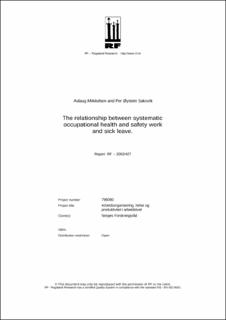| dc.description.abstract | The aim of this study was to describe the degree of systematic HES implementation in the energy branch and to investigate whether degree of systematic HES implementation had any relationship with occupational health in the companies. The systematic work with HES is based on participation and work place democracy. In this study a model of six phases of systematic HES work was used: preparation phase, information, mapping/diagnosing, prioritizing, interventions and evaluation. The study was part of the project “Restructuring the electric energy industry: Work design, productivity and health” funded by the Norwegian Research Council as part of the “Health in Working Life” program. The sample consisted of 13 electric energy companies in Norway.
Survey data from two measurements and qualitative interview data were used. The preparation phase in the implementation process was carried out in almost all the companies, but the higher the implementation phase the less departments were active. The study showed that there was a relationship between organizational level activities and sick leave measured at individual level and aggregated to organizational level. | en_US |
